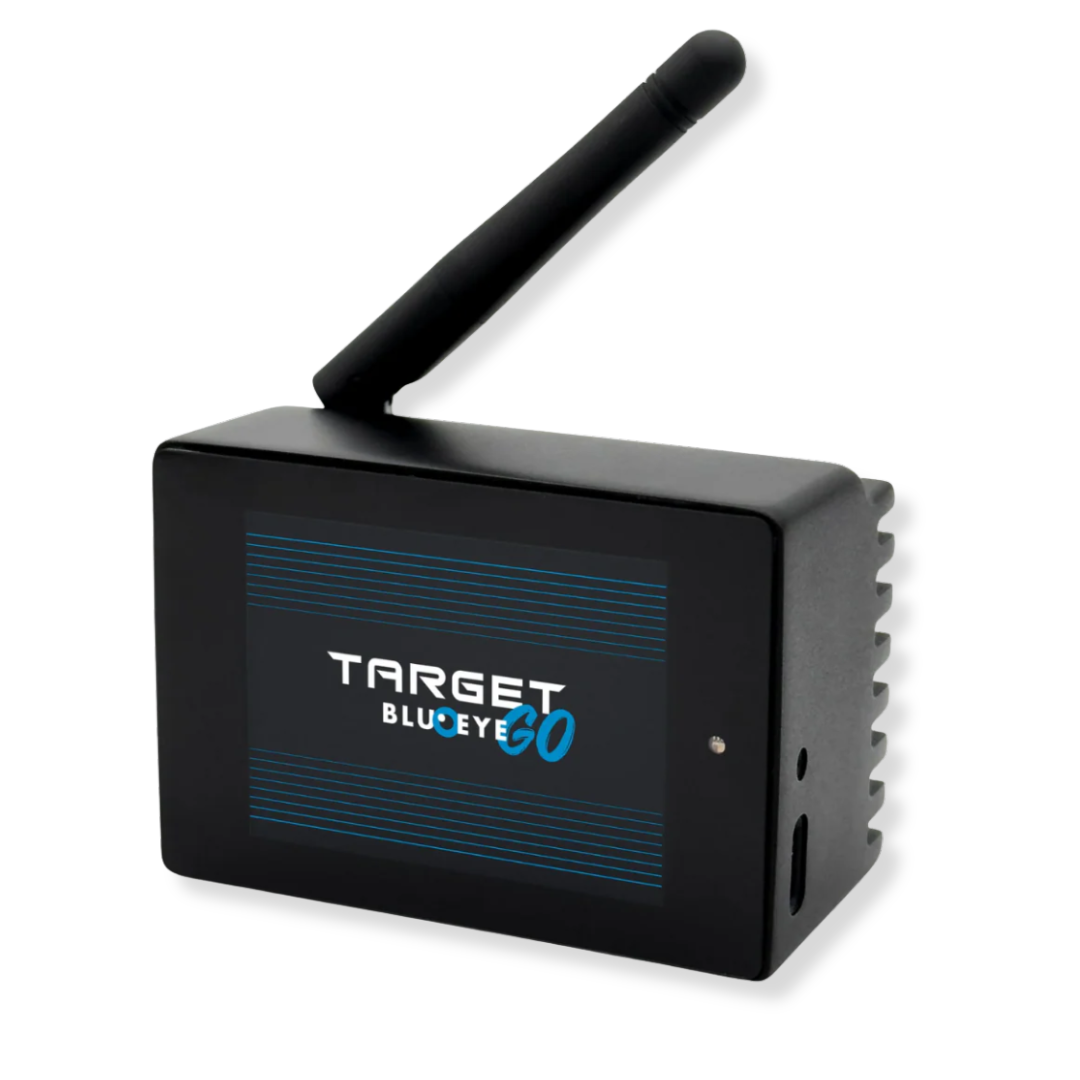How Target Blu Eye Works
So you’re Blu-Eye-curious. Great. Here’s exactly what it does, how it does it, and why it’s such a handy extra sense in modern traffic. We’ll keep the heavy tech clear and the tone human.
The short version
Target Blu Eye is a passive RF receiver that recognises the distinctive TETRA radio “fingerprint” used by UK emergency services (Airwave). When it sees that fingerprint nearby, it gives you visual and acoustic alerts, so you can clock what’s coming, make space sooner, and look like the considerate legend you are.
No eavesdropping. No decoding. No transmitting. Just awareness.
Under the hood (the fun tech bit)
Cars today are noisy—electrically noisy. LED headlights, chargers, heated screens, phone uplinks… all spitting tiny bursts of RF energy. Blu Eye’s job is to find a tiny, very specific pattern in that chaos. Here’s how:
-
Clean front-end
The radio front-end is tuned to the public-safety slice of UHF used for TETRA. Tight filtering keeps out junk before anything clever happens. -
Waveform recognition (not message decoding)
Our DSP looks for TETRA’s timing/modulation signature—think of it like recognising a song from the beat, not the lyrics. Because we never touch message content, Blu Eye stays strictly on the right side of privacy and law. -
Adaptive noise tracking
City centre at rush hour ≠ empty A-road at midnight. Blu Eye continuously measures the local noise floor and auto-adjusts thresholds so you get sensitivity without false chatter. -
Temporal consistency checks
Spikes from a phone charger aren’t TETRA. Blu Eye insists the pattern repeats over time (and across multiple tests) before it alerts. -
Confidence fusion → alert
Only when enough independent checks agree do you get the bargraph + tone. You can pick a sensitivity mode: “tell me early” or “tell me only when close”.
Result: a highly sophisticated algorithm that’s happy in the real world, not just a lab.
What you’ll see on the road
-
Motorways & A-roads: insulated cabins and music delay siren cues; Blu Eye gives you a head start.
-
Urban areas, depots & hospitals: expect a higher baseline of activity (more radios). Drop sensitivity a notch if you prefer a calmer display.
-
Unmarked vehicles: Blu Eye doesn’t care about paintwork. If there’s a TETRA radio active, you’ll get the nudge.
What it shows and how it fits
-
Only suitable for fixed installation (tidy, permanent).
-
Two display options: subtle LED bar (mirror integration) or LCD (dash mount).
-
Detects police (marked/unmarked), fire and ambulance activity.
-
Shows up to 3 services at once.
-
Acoustic + visual alerts.
-
Compatible with recently added high-band Airwave/TETRA channels.
And yes—designed, developed and built in the Netherlands. Keeping engineering and manufacturing close is how we keep quality high and firmware sharp.
Legal in one paragraph
Blu Eye is receive-only and uses waveform recognition. It does not decode any message contents and does not transmit or interfere. That’s why it’s legal to sell and use as a driver-awareness aid.
“Does it always warn me?” — The honest answer (read this last)
Almost always in everyday driving. That’s because day-to-day patrols and response runs typically use TMO (Trunked Mode Operation), where radios stay logged in to the Airwave network and emit tiny periodic keep-alive bursts—exactly what Blu Eye recognises. For routine driving, escorts to incidents, or normal patrol, there’s no reason to switch away from TMO, so Blu Eye will usually chirp before you even see the vehicle.
The rare exception you should know about:
Emergency crews can switch to DMO (Direct Mode Operation) for short-range, radio-to-radio teamwork—think roadside checks, tight convoy/escort between specific vehicles, or incident-ground comms. In DMO there are no network keep-alives, so Blu Eye will only show activity while someone is actually transmitting (push-to-talk pressed). Between transmissions: silence. That’s normal.
So if a police car and an ambulance rocket past and your Blu Eye doesn’t ping, two likely explanations are:
-
they weren’t transmitting at that moment, or
-
they were briefly coordinating direct-to-direct (DMO).
Outside those mission-specific moments, TMO is the norm—and Blu Eye behaves exactly how you want: a calm companion most of the time, and a timely nudge when it counts.
Final word
Blu Eye won’t turn you into a superhero—but it will make you a kinder, earlier-reacting version of yourself. It notices the presence of emergency radios, buys you a few precious seconds, and helps blue lights get where they’re going—fast and safe.
